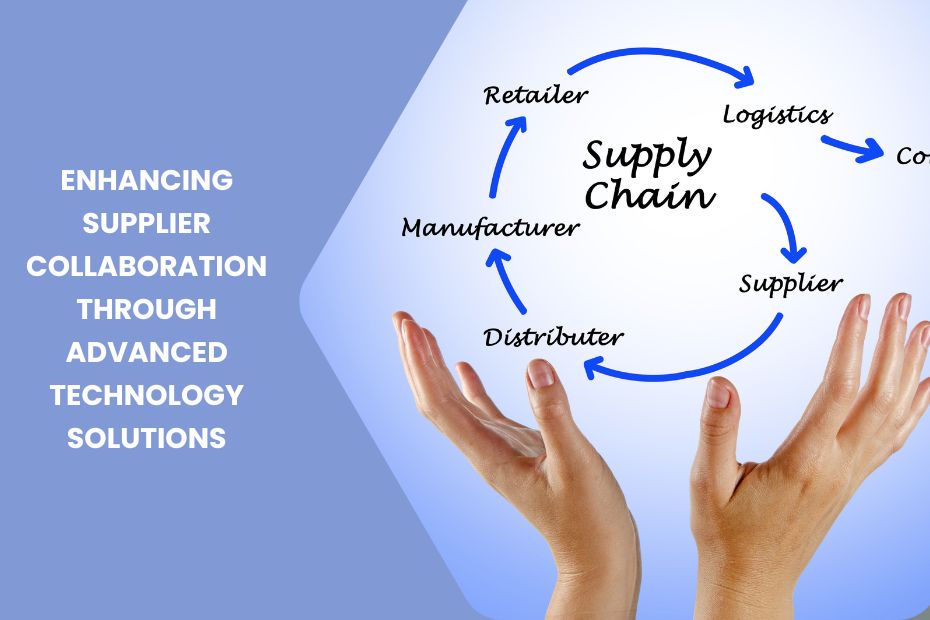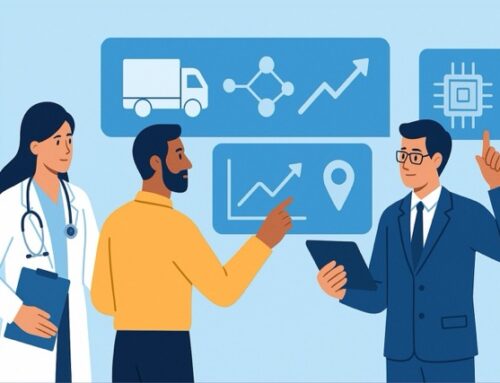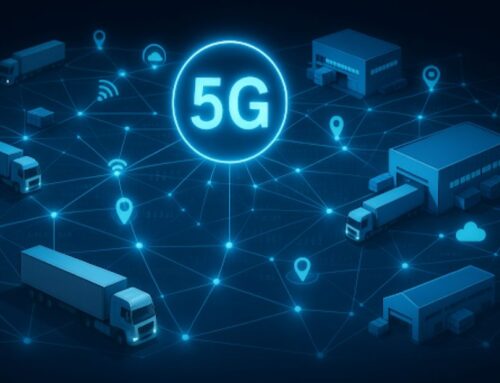Supplier collaboration isn’t just a best practice—it’s a necessity if you want consistent performance, faster issue resolution, and scalable growth. Without it, you’re stuck chasing late orders, correcting mistakes, and negotiating through email chains that never end. I work closely with supplier networks across regions and product categories, and the difference between reactive and collaborative partnerships always comes down to one thing: how well technology connects both sides. The tools we use have to go beyond procurement software and pricing spreadsheets—they need to create visibility, accountability, and shared value. From AI automation to real-time inventory syncing and shared dashboards, the best results come when we stop managing suppliers at arm’s length and start operating as one network.
Turning Cloud-Based Platforms Into Shared Workspaces
Most of our supplier coordination used to happen through spreadsheets and email threads. That made it impossible to maintain version control or respond to changes quickly. Cloud-based platforms solved this by creating a shared environment where we can collaborate in real time. These platforms allow everyone in the supply chain to see the same data—inventory levels, shipment ETAs, invoice statuses, and quality updates—without having to ask for a manual update.
What changed for us was the shift from one-way communication to a shared decision-making model. When a material shortage happens upstream, we see it instantly. When we adjust a forecast or reschedule a delivery, suppliers can respond immediately. This reduces lag, eliminates duplication, and aligns priorities faster. Tools like SAP Ariba and Oracle SCM have helped us scale this across suppliers without sacrificing security or control.
Automating Low-Value Tasks with AI
Procurement and supply coordination generate a mountain of repetitive tasks—PO processing, invoice matching, delivery confirmations, and dispute tracking. These used to eat up time and slow down responsiveness. Now we use AI-driven systems to handle the bulk of it automatically. When a purchase order is approved, it’s transmitted to the supplier and matched to goods received and invoiced—all without manual input unless an exception is flagged.
More than that, AI helps us identify trends in supplier performance. We can see delivery delays before they become patterns, flag pricing inconsistencies, or predict the likelihood of a stockout based on weather disruptions or port congestion. With that kind of forecasting baked into the system, we spend less time reacting and more time planning. The time saved goes into building relationships, not just processing paperwork.
Using Blockchain to Build Trust and Accuracy
Supply chains run on trust, and nothing erodes that faster than inconsistent data or finger-pointing when things go wrong. That’s where blockchain comes in. By using distributed ledgers, we create a single version of the truth that’s time-stamped, transparent, and tamper-proof. Every shipment, payment, or contract change gets logged in real time and shared across the relevant parties.
This is especially useful in complex global sourcing models. When we’re working with multi-tier suppliers or regulated goods, blockchain gives us end-to-end traceability. That means we can verify where a product came from, who handled it, and whether it met compliance standards—all without relying on emailed PDFs or scanned documents. It’s not just about tech sophistication—it’s about trust and proof when accountability matters most.
Supplier Collaboration Software That Works Both Ways
One of the most impactful upgrades has been implementing dedicated supplier collaboration platforms. These tools do more than track orders—they allow both sides to suggest changes, share forecasts, and discuss performance in a structured way. We use systems like o9, Coupa, and JAGGAER to open up planning windows and avoid last-minute firefighting.
Instead of emailing a forecast and hoping it gets loaded into the supplier’s ERP correctly, we work on a shared interface where both sides update, comment, and agree on what needs to happen. This kind of transparency reduces disputes and ensures we’re solving problems early—not when a truck is already late or a line is already down. Suppliers have access to their performance metrics, which builds accountability and drives continuous improvement.
Digital Twins and Real-Time Monitoring
Digital twins—virtual models of real-world operations—have become increasingly useful in high-volume, high-variability production environments. We use them to simulate supplier behavior, test alternate shipping lanes, and run cost-risk scenarios without affecting real inventory. The twin tracks everything: order cycles, production schedules, warehouse utilization, and even disruptions caused by geopolitical events or currency shifts.
What makes this powerful is the ability to test “what happens if” questions with actual supply data. When a key supplier in Southeast Asia experienced port congestion, we used the digital twin to simulate rerouting through alternate ports and shifting production timing. That saved us millions in expedited shipping and customer penalties. It’s not theoretical—it’s planning made practical with real-world inputs.
IoT Devices for Physical Supply Chain Visibility
Physical goods still move on trucks, ships, and through warehouses—and those movements are still prone to delays, damage, and miscommunication. We’ve deployed IoT sensors across containers, trucks, and high-value inventory to get real-time location, temperature, and handling data. When a shipment falls outside its temperature range or gets delayed at customs, the system flags it immediately.
This allows both our teams and our suppliers to respond in real time, whether that means adjusting delivery windows, rerouting inventory, or alerting the customer. It’s not just about tracking—it’s about improving outcomes by removing blind spots. With IoT integration, we’ve been able to reduce spoilage, decrease shrinkage, and cut inbound exceptions by over 30%. That improves supplier satisfaction and lowers our cost-to-serve.
Reframing Supplier Relationship Management Around Shared Goals
Technology only works if it supports the right culture. Too many SRM tools focus on cost and compliance metrics alone. We’ve shifted to platforms that track strategic goals—on-time delivery, innovation contribution, sustainability benchmarks—and share those targets across internal and supplier-facing teams. This aligns incentives and makes collaboration part of the performance conversation.
We hold quarterly reviews with our strategic suppliers, backed by real-time data dashboards. These meetings aren’t about pointing out problems—they’re about highlighting where we’ve grown together and identifying opportunities to go further. Whether it’s co-developing a new product or reducing emissions per shipment, the tools let us measure and manage the relationship, not just the contract.
Tools That Improve Supplier Collaboration
- Cloud platforms for shared real-time data
- AI to automate and predict supplier performance
- Blockchain for traceable, tamper-proof records
- Supplier portals that support two-way planning
- Digital twins for simulating supply chain risks
- IoT tracking for shipment visibility
- SRM tools tied to shared performance goals
In Conclusion
Technology has completely changed how supplier relationships are managed—but only for those willing to use it as more than a digital filing cabinet. When platforms are connected, communication is real-time, and performance is transparent, supplier collaboration becomes a growth driver. The payoff isn’t just lower costs or fewer delays. It’s stronger partnerships, smarter planning, and more resilient supply networks. We’ve stopped managing suppliers like vendors and started treating them as strategic allies—because when you share the right tools, you share better outcomes.
Discover how technology is transforming supplier collaboration in this insight from my Linkedin, where innovation meets supply chain strategy.










